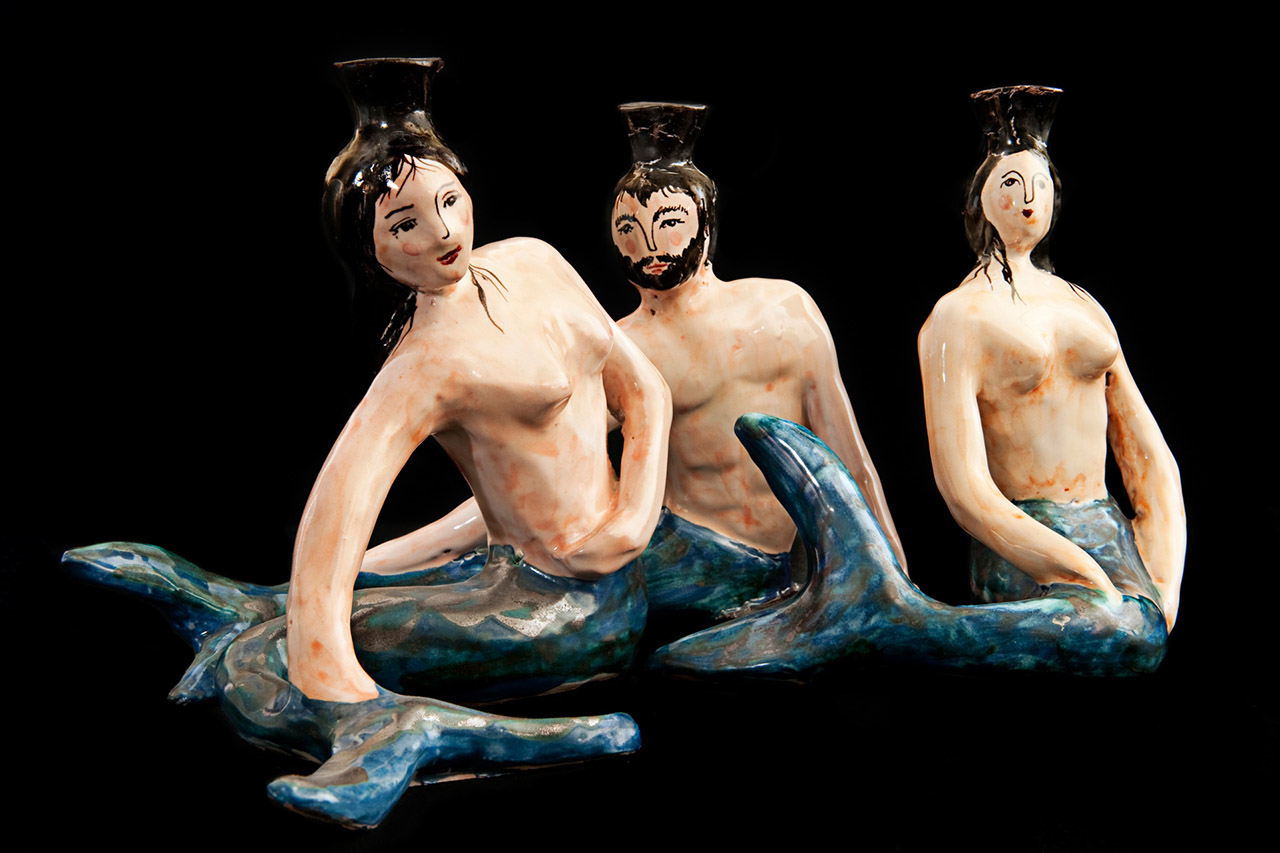For centuries, the beauty of these small islands has attracted dancers, actors, choreographers, and intellectuals. Immersed in the sea off the coast of Positano, the sweet, silent melody surrounding them is magical.
April 24th, 2021. By Alessio Amato, photo by Vito Fusco
The Amalfi Coast is an ethereal land where the beauty and the seduction of the landscapes can bring anyone to Heaven and Hell at the same time. And especially, there’s a place on the coast where mythology and dreams come together. We are talking about three main islands forming the Sirenusas: the Gallo Lungo, La Castelluccia (also known as Isola dei Briganti), and La Rotonda. Here surrounded by a clear and enchanted sea, in what is today a protected area, nothing is impossible as mythological and divine characters meet humans.
A deadly vortex
These small islands have an ancient history: already inhabited during the Roman Empire Era, they were the cause of disasters for many militaries, commercial, and even pirate ships. Indeed, for years, people would fall prey to some of the most vital sea currents capable of creating a vortex around the islands that would crash the ships, leaving no chance.
It was probably why, given the success of these events, people believed that sirens lived on the islands. Mythological creatures resembling a combination of women and birds, Sirens were dangerous creatures that would lure sailors with their captivating voices. In ancient iconography, they were often portrayed as chicken-like figures, where the Italian name Li Galli comes from.

Sirens
Stabo, a Greek geographer and historian who lived between the 1st century BC and the 1st century AD, was the first to ever talk about the islands in correlation to mythology. In his work “Geographica,” he calls the three islands Sirenai o Sirenussai names that allude to the fact that sirens lived there. According to the myths, there were only two occasions where people successfully escaped danger: Odysseus and his ship after the Trojan war and the Argonauts.

From Odysseus to the Argonauts
The myth narrates that Odysseus couldn’t pass the opportunity to hear the sweet melodies made by the sirens, but he followed Circe’s advice and plugged the sailors’ ears with wax. Then, he had himself tied to the moat’s masts to listen to their singing voices safely. The Argonauts, instead, were helped by the greek god Orpheus, who chanted a counter-melody to save them. The legend is that the sirens, unable to cope with humiliation, threw themselves into the sea in despair and were turned into stones. These are only two popular beliefs passed down from generation to generation. Still, today, it evokes curiosity and admiration.
A bridge between the Coast and Capri Faraglioni
Behind the beauty of the landscape, a real threat to ships and boast exists in these waters. The sea near the islands has preserved and probably still protects the vessels’ wrecks and the souls of the men who lost their lives and their hopes on these rocks. During the Middle Ages, there was a shift in how this place was perceived: from a place of despair, it became a beacon of hope for military purposes. People set up fortifications with towers on the island to signal through fire and smoke the presence of enemies or threats to their troops.
During the years
During the Norman-Swabian period, the islands were mentioned as Guallo (1131), and in 1225 Frederick II of Swabia granted them to the Monastery of Positano. During the middle of the 19th century, the islands were owned by the Counts of Guissi, who used them as a location for rabbit breeding.

Leonide Massine
The Russian choreographer Leonide Massine was mesmerized by a harmonious mix of nature and Roman ruins, so he bought the islands for 300,000 lire (the Italian coin before euro) in 1924. What initially was a place to find solace from his stressful work life became his source of inspiration, peace, and a way of connecting with nature and a more simple life.
He had people build a little theatre there, inspired by the Sicuracusa’s classical one, which sadly was destroyed by a storm in 1964. “I’d love to see the island turn into a place where artists from all over the world could come and find inspiration, just like I did. An occasion to get away from the smothering materialism of our societies and rediscover the beauty of nature”, Massine loved to say.

Nureyev’s impact
Over the years, many artists and famous people have come to the islands. Celebrities such as Franco Zeffirelli, Steven Spielberg, the actress Sophia Loren, Anna Magnani e Ingrid Bergman, and even Kennedy and Onassis. In 1989, the island turned into Rudolf Nureyev’s property; the famous dancer made his last departure from the island on the 3rd of September 1992 before passing away in 1993.
As a plaque still reminds us today, ‘Cloaked in splendor and theatrical glory, he used to walk every day with steady or fleeting steps on his way to and from these shores to his island of Li Galli.’ He cherished the island like his most private shelter: there, he had a dancing room covered with mirrors and surrounded by bars and a red pine parquet. We can almost picture him dancing while listening to the voices of the sirens.
(Translation by Michela Pandolfi)
